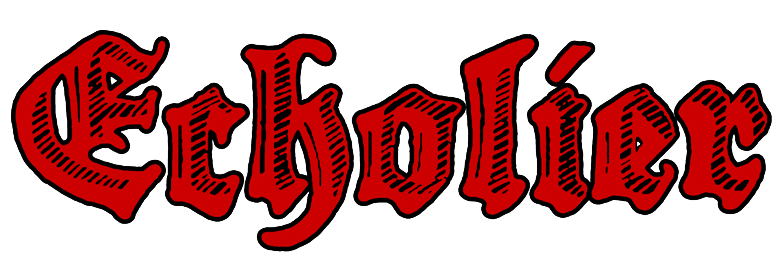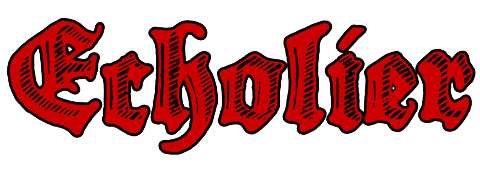1943: Under Fire
February 26, 2018
“Full throttle Mr. Clark,” my commanding officer barked. “We are taking on heavy fire and can’t last long up here!” Quick as I could I threw the throttle to full speed. Crash! We’ve hit the rocky shore, the LVT has taken heavy damage, and the gunman was hit. But this is not where my story begins.
From the time I was born in 1919 my parents had raised me Adventist, and in our religion we believe in one God who created us and everything in the universe. He gave us ten key laws to abide by. The eighth of which is “Thou shalt not kill.” But it’s 1940 now, and the government just initiated the first peace-time draft anticipating an impending war. The draft required all men
21 – 45 to register for the draft. This meant me, which terrified my parents and I both.
* * *
September 19, 1943
In the mail we received a long white envelope which read, “Greetings. The President of the United States and your neighbors have selected you to be drafted into the Armed Forces to protect the country…” Within a week I was to report to the naval base in Norfolk, Virginia, for my training. Before the Japanese brutalized the American Naval base in Pearl Harbor, Hawaii, navy training lasted about seven to eight weeks but after, because of the high demand for troops, the training was shortened to only six weeks.
* * *
September 23, 1943,
Today my train leaves for Norfolk, Virginia. My bags are packed and I’m ready to leave the station. But before I leave my parents stop me. My father shook my hand and wrapped his big arms around me, gave me a hug, and said goodbye. My mother grabbed me, held me tight, and kissed me on the cheek and said goodbye. I jumped on the train and found my seat. I was off to training.
* * *
September 26, 1943,
Today is day one of six weeks of hell for not only myself, but over five-hundred others. Upon arrival, we are taken to our living quarters and then comes roll call. “John Williams, Charles Thomas, Richard, Davis,” the commander walking down the rows of men calling out our names. He approached me, saluted, and kept going down the line. He finished calling out the names, and with his deep booming voice he said, “Men this will be the worst six weeks of your life yet but, it’s training you for war you will have to jump fences go, under barbed wire, and carry the injured all while dodging bullets! Are you ready.”
“Sir, yes, Sir!”
* * *
November 7, 1943,
The past six weeks of training have been the most physically and mentally strenuous weeks of my life (or so I thought). However, I feel I’ve become stronger and and have made connections that could help me through the war.
But today is our deployment date we are being deployed to the San Diego Naval Base where we will be assigned our first mission. We are being assigned to our boats for the attack on Tarawa Atolls. A few men including John Williams and I from the training camp were assigned to the LVT (A-6). The LVT is an amphibious vehicle that has armored plates for the approach of the beach and once there you drive straight up the bank and open fire.
* * *
November 10, 1943,
The forces of the US army combined with the Marine Corps depart for Betio an island on the Tarawa Atoll. It was a sight to see with the total amount of troops numbering over thirty five thousand.
* * *
November 13, 1943,
The US Navy has begun its bombardment of Japanese positions on Tarawa as well as Makin preparing for the amphibious assault using our LVTs. It is so loud that my ears have stopped ringing. Each shell measuring in at 16 inches shaking the ship and obliterating anything in its path. The few that did hit their marks were followed by an immense fireball shooting several hundred feet into the air signaling the destruction of a Japanese ammunition bunker.
* * *
November 20, 1943,
For seven days the warships and warplanes bombarded the Japanese positions all across the island. The day had finally come when we would board the LVTs and go ashore. After seven days of constant firing we were supposed to be the clean up crew. But when the LVTs hit the water that’s when the real battle started.
While the first wave of LVTs was making its way towards the beach the battleships began laying down cover fire to stop the Japanese machine gun fire. As the first glint of dawn shinned across the waves the command came to LVT (A-6) that it was time for us to drop into the water and try our best under the fire of the battleships to make it to shore. I pushed the throttle forward slowly until…Splash! I felt the LVT slow down in the water.
As I pushed the throttle forward more I could hear the Japanese machine guns firing I knew we were getting close. I could hear the bullets whizzing merely feet above our heads. Ping ping ping ping the bullets are bouncing off the armored plates around the LVT. “Aaah” I heard a scream from above me. “Full throttle Mr. Clark” my commanding officer barked “We are taking on heavy fire and can’t last long up here! Williams is hit.”
Quick as I could I threw the throttle to full speed. Crash! We hit the rocky shore. We are stuck. Below the deck water began to fill the engine room. My commanding officer yelled to me “Man the gun!” I had never manned a gun before I couldn’t shoot the gun. What if I killed someone. I was taught never to kill people. These thoughts all ran through my head as I quickly made my way to the gun. Another man standing in front of me fell to the ground. I jumped into the gunners seat and readied the gun. I took aim and just before I squeezed the trigger the Japanese machine gun fire sprayed the LVT again.
We all got down on the ground and the bullets whizzed past our heads and ricocheted off the LVT. The machine guns stopped firing and I looked ahead of me and I saw the commanding officer on the ground with blood surrounding him.
“Commander,” I said “commander!” I said louder. There was no response. Without instruction from our commanding officer we had no job other than survive. A few men jumped over board and tried to swim back to the ship but were met with the wrath of the Japanese machine guns. I quickly looked over the edge to look for any way to get back to the ship. I looked toward the beach and none of the LVTs had made it past the battery of the Japanese. I looked back towards the battleships and creeping towards us is a small boat. The commander and Williams are still down. The boat is slowly creeping closer. I saw them drag something out of the water and into the boat. As they came closer I saw them drag something else out. When they were almost to us I saw what they had brought aboard. They are injured American soldiers. Slowly but surely the boat floated to us.
“Do you have any injured men?” the men on the boat yelled to us. Of course I answered “Yes.” Under the fire of the Japanese I helped them heave the commander and Williams over board and into the boat. But before they left the machine guns began firing again the bullets flying past our heads we jumped into the small boats and put our heads down but before I could get flat I was shot in the calf. The medics on the boat put a rag around my leg and twisted it tightly to prevent me from bleeding out. Slowly through the gun fire we made our way back to the battleship.
* * *
November 21, 1943,
At the break of day the injured were brought back to the mainland for treatment. When we arrived there the injured were taken to the hospital for treatment. The hospitals were being completely over run with injured soldiers because of the war. The hospitals have beds lining the walls in every hallway. I was put at the end of a hallway facing another. The doctors took me into an operating room and removed the bullet from my leg and stitched me up. They rolled me back to my bed where I began to realize had it not been for the Japanese hitting me I might have lost my religion. I was about to attempt to kill a man. Later that night another patient was brought in to the hospital and wheeled to a bed that paralleled my own on the cart lay John Williams, who over the next two weeks became one of my best friends.
Works Cited
Bobek, Milan. Editor. Decades of the 20th Century: 1940’s. Prescott: 2005. Print.
Staff, history.com. Battle of Tarawa. 2009. Web. 29 January 2018
“The Bloody Battle of Tarawa, 1943.” EyeWitness to History, www.eyewitnesstohistory.com (2003). Web. 29 January 2018
Bibliography
Antill, Peter. Operation Galvanic (1): The Battle for Tarawa November 1943. 22 January 2002. Web. 29 January 2018.
“Battle of Tarawa – (November 20th – 23rd, 1943).” secondworldwarhistory.com. 2003-2018. Web. 29 January 2018.
Colonel Joseph H. Alexander. “Across the Reef: The Marine Assault of Tarawa.” nps.gov 1993.
Web. 29 January 2018.
Wm. J. Veigele, Ph. D. Lt, USNR. “World War II Boot Camps.” astralpublishing.com. 2005. Web. 29 January 2018.


Cesiah Hernandez • Mar 15, 2018 at 2:21 pm
This was a good story, I can really hear it in my head. The storyline was a great choice
Daniel • Feb 28, 2018 at 2:15 pm
This story was very good! You did a great job at making the story informative, but adding facts in a way that helped it to blend into the story. It created more depth and content to the different scenes portrayed. It was cool to see that our main characters shared a similar internal conflict in dealing with the commandment: “thou shall not murder”. It’s clear that you did sufficient research, and had a solid understanding of what happened during the year you chose. Overall, your story was captivating, and very fun to read!